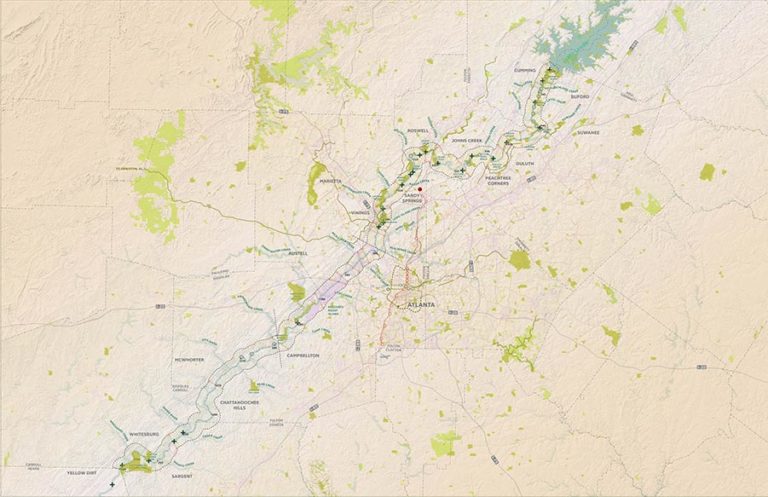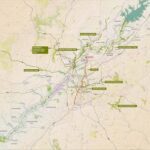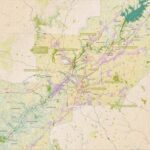Greenspace & Water Access

Almost 40% of greenspace exists within a half mile of the River corridor, suggesting a wealth of opportunities for Greenway planning. However, parks, greenspace, and water access points are not equally distributed throughout the corridor, with greater opportunities for recreation and direct water access concentrated in the north. Conversely, the southern portion of the corridor presents several challenges to direct River access and public park space, including lack of River crossings, and limited water access points. Overall, these contrasting patterns present a tremendous opportunity in the south to increase direct and indirect water access. This may be achieved by working with adjacent property owners to seek easements for access or by identifying existing utility easements that may get people to the water. There may also be opportunities to seek alternatives to direct access via tributaries, creeks, and to highlight existing local trail routes for access to other parts of the River. Other strategies might include prioritizing sites that could become public in the future that might be suitable for greenway segments, parks, plazas, and other spaces. Public land ownership by Georgia Power, county water departments, and other utilities should be evaluated for easement and public access. Providing this kind of access, where feasible, would go a long way in connecting people with nature, increasing recreational opportunities, and providing a wider range of physical activity and travel options.
Even where park coverage is strong in the northern portion of the study area, access and connectivity between parks is limited. The CRNRA units collectively represent one of the most significant public resources along the River, but the individual units are spatially isolated from one another and operate as related but separate destinations. The Greenway Study offers the opportunity to physically connect these resources into a continuous public realm that amplifies the importance of these public national resources.

/-84.582749,33.733682,12/300x186@2x?access_token=pk.eyJ1IjoibHpjYW11dGkiLCJhIjoiY2o3a281dWJvMHE4ajMzbGF4enJyNHRiciJ9.DhYjvPk5E_wJvys5DU5v2A)



